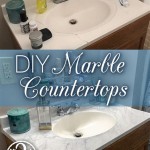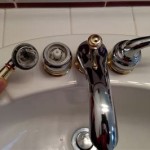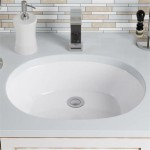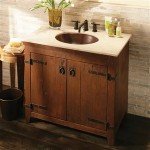How To Remove Mold From Bathroom Tiles Naturally
Mold growth in bathrooms is a common problem due to the consistently humid environment. While commercial cleaning products can be effective, many individuals prefer natural methods due to concerns about harsh chemicals and indoor air quality. Several effective natural solutions can eliminate mold and prevent its return.
Understanding the Importance of Mold Removal
Mold not only detracts from the aesthetic appeal of a bathroom but also poses potential health risks. Mold spores, released into the air, can trigger allergic reactions, respiratory issues, and exacerbate existing conditions like asthma. Therefore, prompt and thorough mold removal is crucial for maintaining a healthy home environment.
Effective Natural Cleaning Solutions for Bathroom Tiles
White Vinegar: White vinegar is a pantry staple with potent antifungal and antibacterial properties. Its acidity disrupts mold growth, effectively killing it on contact. To use, fill a spray bottle with undiluted white vinegar and spray the affected tiles liberally. Allow the vinegar to sit for at least an hour, then scrub the area with a stiff brush and rinse thoroughly with water.
Baking Soda: Baking soda is a mild abrasive and natural deodorizer that helps to lift mold stains and eliminate musty odors. Create a paste by mixing baking soda with a small amount of water. Apply the paste to the moldy areas and let it sit for approximately 30 minutes. Scrub the tiles with a brush and rinse clean.
Hydrogen Peroxide: Hydrogen peroxide is an oxidizing agent that effectively kills mold and lightens stains. A 3% hydrogen peroxide solution, readily available in most drugstores, is suitable for bathroom tile cleaning. Pour the solution into a spray bottle and apply it to the moldy areas. Allow it to sit for 10-15 minutes before scrubbing and rinsing.
Tea Tree Oil: Tea tree oil is a natural antifungal and antibacterial agent. Due to its potency, it should be diluted before use. Mix one teaspoon of tea tree oil with one cup of water in a spray bottle. Spray the affected area and allow it to sit for a few hours. Scrub and rinse the tiles clean.
Grapefruit Seed Extract: Grapefruit seed extract is another natural antifungal and antibacterial agent. Mix 20 drops of grapefruit seed extract with two cups of water in a spray bottle. Spray the solution onto the moldy tiles and leave it for a few hours before scrubbing and rinsing.
Enhancing Cleaning Effectiveness
Proper ventilation is essential when cleaning with any of these solutions. Open windows and doors to allow fresh air to circulate and aid in drying the treated areas. Wearing gloves and a mask is also advisable to prevent skin irritation and inhalation of mold spores.
Preventing Mold Recurrence
Mold thrives in damp environments, making prevention crucial after cleaning. Addressing the root causes of moisture buildup is key to long-term mold control.
Improve Ventilation: Ensure adequate ventilation by using exhaust fans during and after showers and baths. Leaving the bathroom door ajar after showering can also help to reduce humidity.
Fix Leaks Promptly: Leaky faucets, pipes, and showerheads contribute to moisture buildup. Addressing leaks promptly is essential to prevent mold growth.
Wipe Down Surfaces: After showering, wipe down tiles and shower doors with a squeegee or dry cloth to remove excess moisture.
Regular Cleaning: Regular cleaning with a natural cleaning solution can prevent mold from taking hold. A weekly cleaning routine can significantly reduce the likelihood of mold growth.
Choosing the Right Cleaning Solution
The best natural cleaning solution will depend on the severity of the mold infestation and personal preference. For light mold growth, vinegar or baking soda may suffice. For more stubborn mold, hydrogen peroxide, tea tree oil, or grapefruit seed extract may be more effective.
Safety Precautions
When using any cleaning solution, always test it on a small, inconspicuous area first to ensure it doesn't damage the tile surface. Never mix different cleaning solutions, as this can create harmful chemical reactions. Always wear gloves and ensure adequate ventilation when cleaning with any of these solutions.
Maintaining a Mold-Free Bathroom
By implementing these natural cleaning methods and preventative measures, maintaining a mold-free bathroom is achievable. Regular cleaning, combined with addressing the underlying causes of moisture, will help ensure a healthy and aesthetically pleasing bathroom environment.

How To Clean Mold In Shower Grout Tips And Tricks Certified Care

How Do I Remove Black Mould From Shower Floor

Homemade Mold Prevention Spray Tips To Clean In Shower

5 Easy Ways To Clean Mold In Shower Grout Naturally Wikihow

Kill Bathroom Mould Without Bleach Electrodry Blogs

How To Use Vinegar Keep Mildew From Coming Back Bathroom Cleaning More

5 Easy Ways To Clean Mold In Shower Grout Naturally Wikihow

Cleaning Mrs Hinch Fans Share Easy Ways To Clean Tile Grout Express Co

Black Mold In The Shower Here S How To Remove It Help For You

The Top 4 Causes Of Bathroom Mould How To Get Rid It
Related Posts







